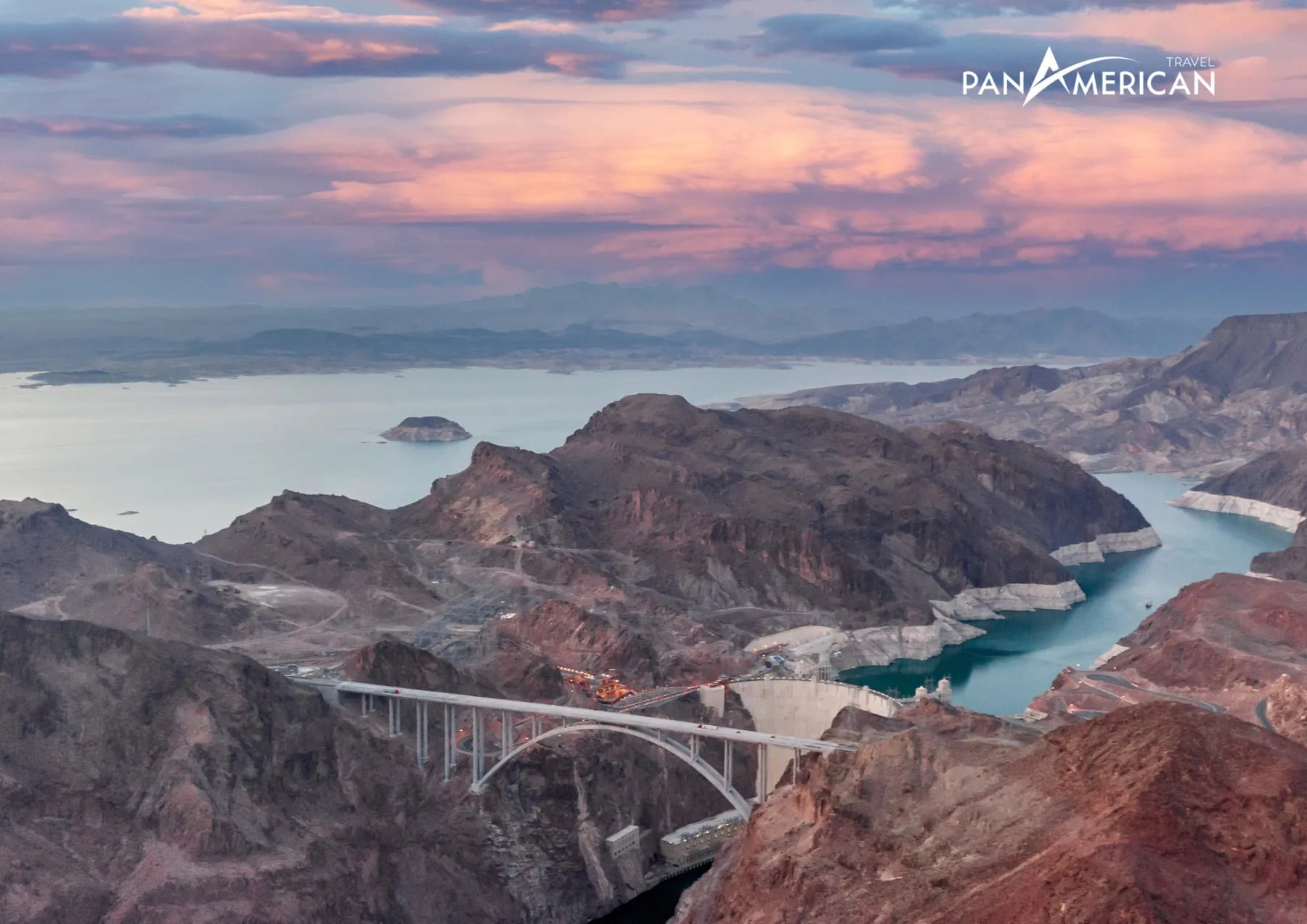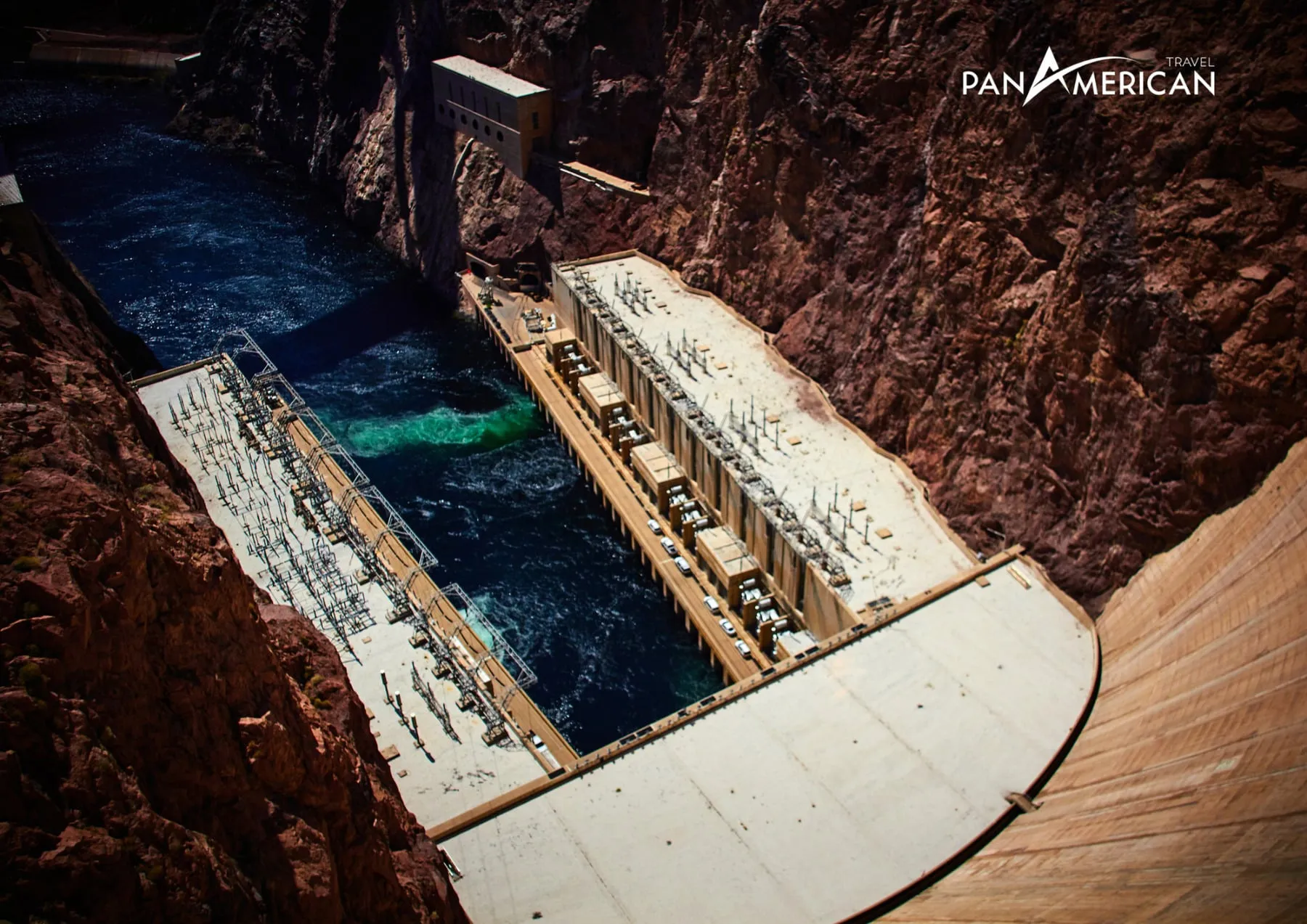Nevada, famed for the dazzling Las Vegas and glittering casinos, is more than just an entertainment paradise; it’s also a treasure trove of rich history. From Native American relics to the imprints of the Industrial Revolution, Nevada offers a fascinating journey of discovery for history and culture enthusiasts. Join Discovery To Wonders as we explore the most famous historical landmarks in Nevada, where you can check-in and feel the flow of time.
Hoover Dam: An Engineering Marvel and National Historic Landmark
The Hoover Dam, a monumental feat of engineering, is not only a vital source of electricity and water for the region but also a National Historic Landmark attracting millions of visitors each year. Situated on the Colorado River, on the border between Nevada and Arizona, the Hoover Dam stands as a symbol of human perseverance and resilience in the face of the Great Depression.

History and Construction
The Hoover Dam project began with the Boulder Canyon Project Act, approved by the U.S. Congress, paving the way for a large-scale hydroelectric project on the Colorado River. Six major companies collaborated to undertake the project, attracting thousands of workers from across the country. To meet housing needs, Boulder City was established as a residential area for workers and their families. The construction of the Hoover Dam significantly contributed to the development of Las Vegas, transforming a small town into a bustling city.
The construction of the Hoover Dam, particularly the concrete pouring phase, was completed in just two years, far ahead of schedule. The seamless coordination between engineers, workers, and contractors ensured the project was completed quickly and safely. Initially, the project was called “Boulder Dam,” but it was later renamed “Hoover Dam” to honor President Herbert Hoover, who played a significant role in promoting the project.
Highlights of Hoover Dam
- A Great Engineering Marvel: With a height of 726 feet (221m) and a massive volume of concrete, the Hoover Dam is a testament to human ingenuity and construction capabilities.
- Rapid Completion Time: Completing the Hoover Dam two years ahead of schedule during an economic crisis is an incredible achievement.
- Mike O’Callaghan-Pat Tillman Memorial Bridge: The highest concrete arch bridge in the world, connecting Nevada and Arizona, offers a stunning view of the Hoover Dam and the Black Canyon.
- Historical and Cultural Icon: The Hoover Dam is not just a construction project but also holds profound historical and cultural value, symbolizing national cooperation and the ability to overcome adversity.
- Popular Tourist Destination: The Hoover Dam attracts millions of visitors annually, not only for its historical and engineering significance but also for its majestic beauty.

Goldfield: A Charming Ghost Town
Goldfield, a ghost town located in central Nevada, was once one of the largest gold mining areas in the United States in the early 20th century. Today, Goldfield is a fascinating destination for those seeking to explore mining history and experience the wild west.
History and Development
Goldfield was founded in 1902 after gold was discovered in the area. The town rapidly developed, becoming a bustling mining center with a population of over 30,000 people. Goldfield boasted numerous hotels, theaters, casinos, and other businesses, attracting fortune seekers from around the world.
However, Goldfield’s prosperity was short-lived. Following a major fire in 1923 and the decline of the mining industry, the town gradually became deserted. Today, Goldfield has only a few hundred residents and some preserved historical buildings.
Must-See in Goldfield
- Goldfield Hotel: A luxurious hotel built in 1908, renowned for its unique architecture and ghost stories.
- Santa Fe Saloon: An old-fashioned saloon where visitors can enjoy drinks and learn about Goldfield’s history.
- Goldfield Consolidated Mines Mill: The ruins of a large mining mill, a testament to Goldfield’s former prosperity.
- Goldfield Cemetery: An old cemetery, the final resting place of those who once lived and worked in Goldfield.

Virginia City: Legendary Silver Mining Town
Virginia City, a historic town nestled on the slopes of the Comstock Lode, was once one of the richest silver mining areas in the world in the 19th century. Today, Virginia City is a popular tourist destination, attracting visitors with its historic architecture, captivating historical tales, and wild west atmosphere.
History and Development
Virginia City was established in 1859 after silver was discovered in the area. The town quickly grew, becoming a thriving mining center with a population of over 25,000 people. Virginia City featured numerous hotels, theaters, casinos, and other businesses, attracting fortune seekers from across the globe.
Virginia City was also home to many famous figures in history, including writer Mark Twain, who began his writing career here.
Must-See in Virginia City
- Comstock Lode: The legendary silver mining area that brought prosperity to Virginia City.
- Piper’s Opera House: A historic theater that hosted many famous performers in the 19th century.
- The Way It Was Museum: A museum displaying artifacts and images about the history of Virginia City.
- Virginia & Truckee Railroad: A historic railway line where visitors can experience a journey back in time.
Valley of Fire State Park: Ancient Civilization’s Legacy
Valley of Fire State Park, Nevada’s oldest state park, is not only famous for its stunning red sandstone formations but also for preserving traces of ancient civilization. The petroglyphs of ancient Native Americans are evidence of human presence in this area thousands of years ago.
Exploring the Petroglyphs
The petroglyphs at Valley of Fire State Park are a priceless historical and cultural treasure. Archaeologists believe these carvings were created by the Anasazi and Patayan people, Native American tribes who lived in this area from around 3,000 years ago.
The petroglyphs depict various subjects, including animals, humans, religious symbols, and daily life activities. Deciphering these carvings can help us better understand the life and culture of ancient Native Americans.
Must-See in Valley of Fire State Park
- Mouse’s Tank Trail: A short trail leading to a small water basin where many petroglyphs are located.
- Atlatl Rock: A large rock with numerous petroglyphs, including an image of an atlatl, an ancient Native American weapon.
- Petroglyph Canyon: A canyon with many petroglyphs, where visitors can explore and learn about the history of the area.
Conclusion
Nevada is not just a world-leading entertainment destination but also a rich historical treasure. Checking in with the famous historical landmarks in Nevada is a fascinating journey of discovery, helping you better understand the past and appreciate the cultural values of this land. From the majestic Hoover Dam to the charming ghost towns, Nevada will offer you unforgettable experiences.